There are not many more animals that have the diversity that tarantulas do. With well over 800 types of tarantulas in existence, there are species of all shapes, sizes, and colors.
Of all of the colors that tarantulas come in, blue appears to be the favorite color. Blue tarantulas seem otherworldly — exhibiting a color that you don’t commonly see on other living creatures.
A blue tarantula would easily become a staple of any collection. Therefore, these tarantulas are extremely sought-after and often fetch very high prices.
Table of Contents
Top 10 Blue Tarantula Species
There are a decent amount of tarantulas that have blue somewhere on their bodies. While they’re definitely beautiful, this post features the tarantulas that exhibit the most blue coloring.
As far as the ranking goes… that’s more personal preference. You may find a particular blue tarantula more stunning than others.
So, without further ado — let’s get into the 10 best blue tarantulas!
10. Chilobrachys sp. Electric Blue Tarantula
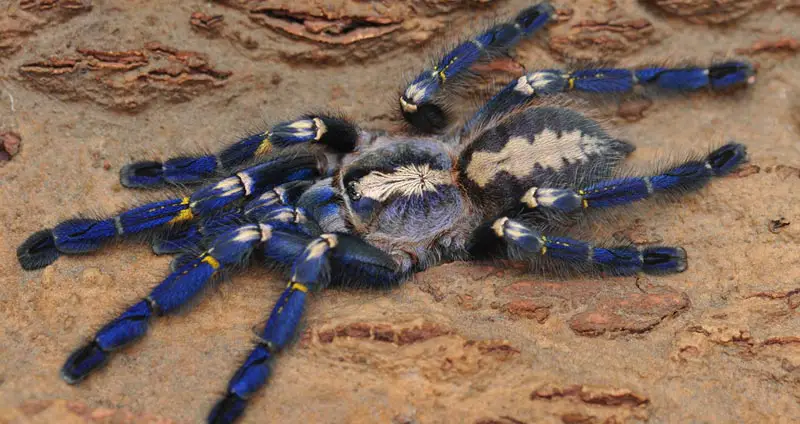


Chilobrachys dyscolus – This is a tarantula that’s become very popular as of recent, and for a very good reason! Chilobrachys sp. Electric Blue is known for its bright blue front legs and pedipalps that shimmer and shine in direct light.
This blue coloration only gets more pronounced as it ages, making this a tarantula species that ages like fine wine.
In addition to its beautiful blue color, it’s also a very spunky tarantula with a great personality. So, not only do you get a great display species, but you also get a tarantula that’s always entertaining!
9. Birupes simoroxigorum
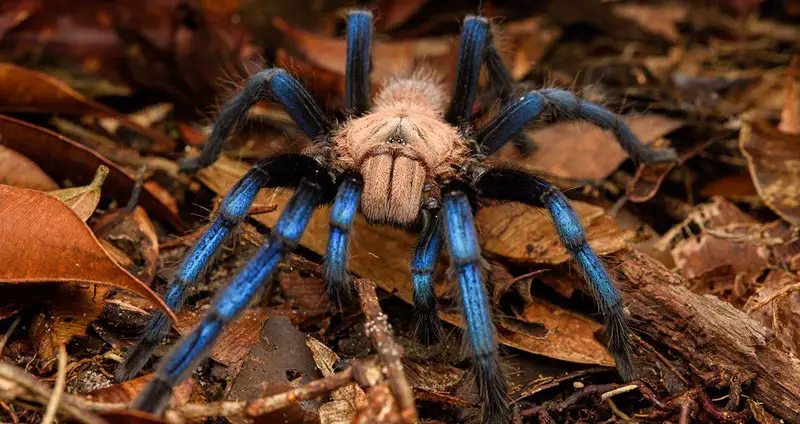
Birupes simoroxigorum – This tarantula doesn’t have a common name yet due to the fact that it’s so new, but it absolutely needed to be included in this list. Look at those brilliant blue legs!
This newly-discovered tarantula is the first in its genus, Birupes. In fact, its genus name comes from the Malay word “biru”, meaning “blue”. All of its legs are a stunning electric blue that contrast its toffee-colored body.
As it stands, this tarantula isn’t being captively-bred, so any specimens are illegally imported from abroad. So, while this tarantula can’t be owned right now, it’s certainly something to admire.
8. Singapore Blue Tarantula
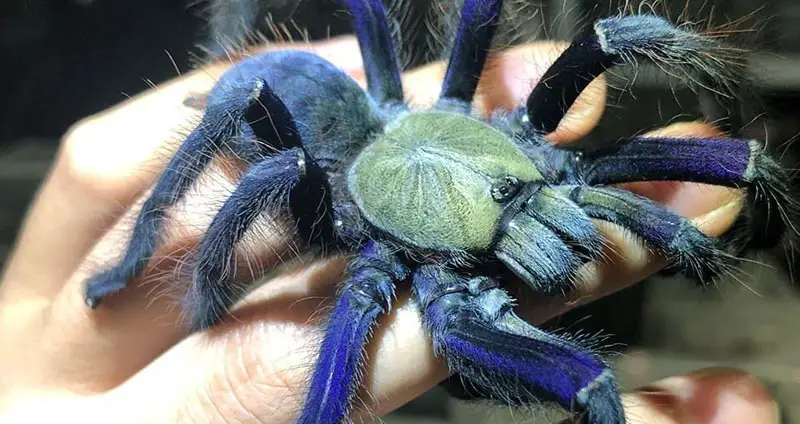
Lampropelma violaceopes – This is a very large old world arboreal tarantula that has become a favorite in the tarantula trade due to its incredible blue appearance.
Females are a rich blue with a darker abdomen, while males are slightly less vibrant. As they age, males shift in color from blue to either green or yellow.
The variation in different shades of blue across the body of this tarantula is really something to behold. Combine that with the fact that this tarantula grows to a legspan of about 9″… it’s just crazy!
7. Socotra Island Blue Baboon Tarantula
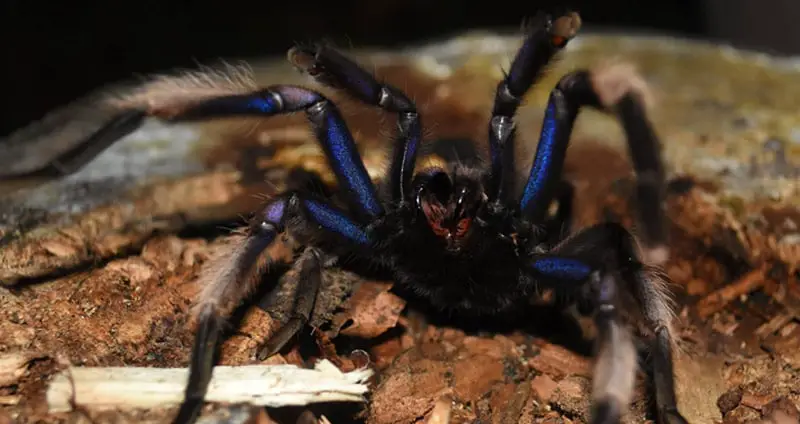


Monocentropus balfouri – This tarantula species actually won Best In Show in the 2014 British Tarantula Society Exhibition, and it’s quite clear why that is!
Unlike most other baboon spiders, this tarantula has incredible coloration. Its rich blue legs contrast its tan body, and it appears to have a gradient of light blue at its carapace to dark blue at the tips of its feet.
This species also has a very fiery personality, acting quite aggressive and moving with impressive speed.
6. Brazilian Blue & Green Pinktoe Tarantula
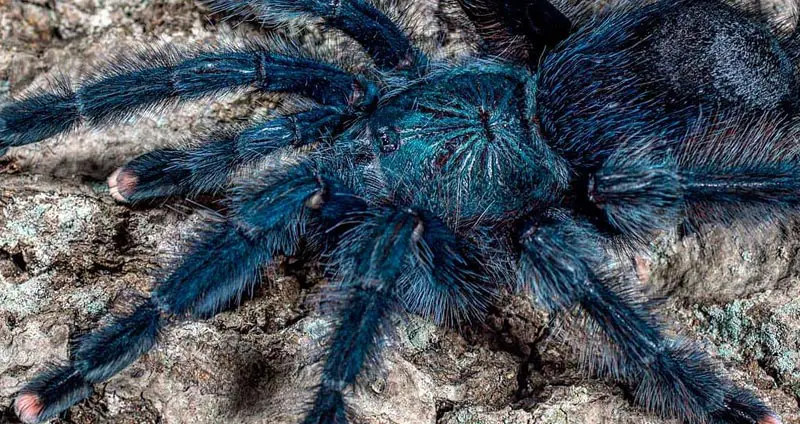
Avicularia geroldi – The common name of this tarantula, the Brazilian Blue & Green Pinktoe tarantula, is quite descriptive. Essentially, this is a pinktoe tarantula with beautiful blueish-green coloring evenly covering its entire body.
Adults are a deep blue color that looks almost iridescent in direct sunlight. Its abdomen is near-black with a subtle blue coloration to it as well.
The tips of its legs have the characteristic pink coloring that pinktoe tarantulas have — a color that makes the blue color in this tarantula really pop!
5. Brazilian Jewel Tarantula
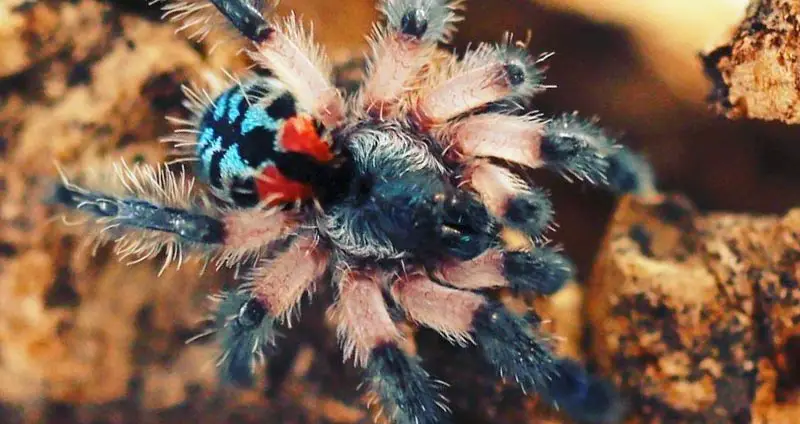
Typhochlaena seladonia – One of the most expensive tarantulas in existence today, the Brazilian Jewel tarantula is truly a jewel to enthusiasts.
While this tarantula has different shades of blue on its carapace, lets, and abdomen, blue isn’t the only color on it! It also features a myriad of shades of red, yellow, black, and everything in-between.
While this tarantula only grows to be about 2.5″, its stunning blue color makes it very easy to spot.
4. Gooty Sapphire Ornamental Tarantula



Poecilotheria metallica – Easily one of the most popular tarantulas out there today due to its good looks, rarity, and temperament. The Gooty Sapphire Ornamental tarantula really lives up to the “sapphire” in its name.
A rich, royal blue color covers this tarantula, and it’s only broken up by a white streak down the middle of the carapace/abdomen and white/yellow markings on its legs.
Seeing this blue coloring in person is something that you’ll never forget.
3. Brazilian Blue Tarantula
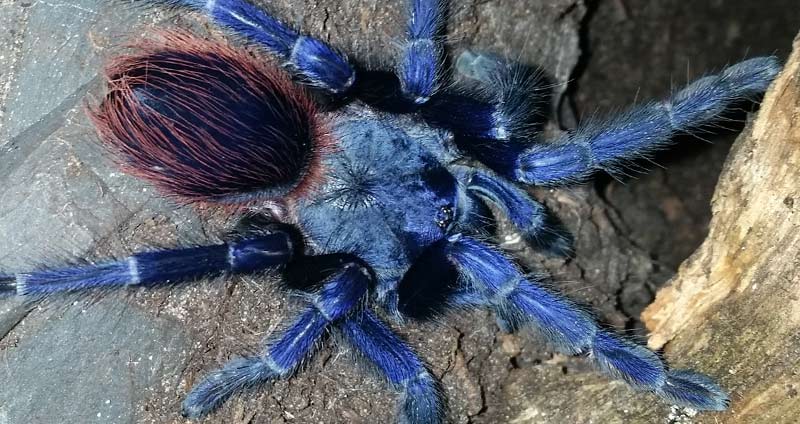
Pterinopelma sazimai – A beautiful blue tarantula with a bit of a twist to it! Females of this species are a very rich, deep blue all over their entire bodies.
However, what makes this species unique is that it has red setae on their abdomen that contrast the blue color excellently.
If you’re looking for a blue tarantula with a little something extra, this “accent abdomen” is the way to go!
2. Greenbottle Blue Tarantula
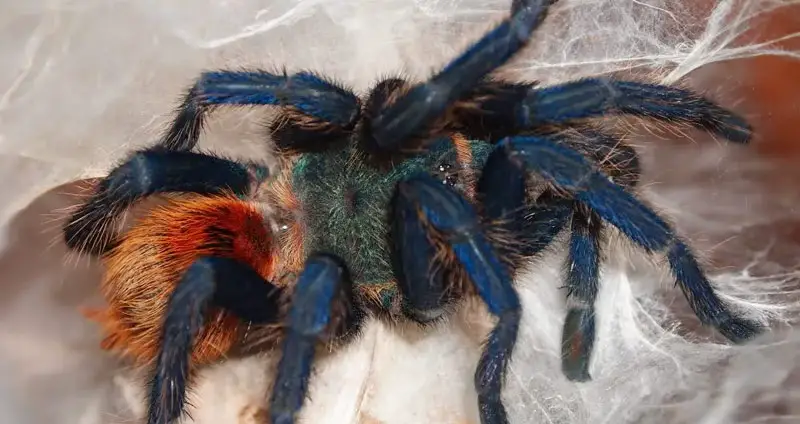
Chromatopelma cyaneopubescens – The Greenbottle Blue tarantula is actually frequently compared to the Brazilian Blue Tarantula. It also has a blue body with a red abdomen! However, it does differ in a few ways.
This tarantula species has a more diverse range of blue colors across its body with rich blue legs and a blue/green carapace. It then has a small abdomen with orange hairs, and orange hairs thinly covering the rest of its body.
It’s these slight differences that have made this tarantula
1. Cobalt Blue Tarantula
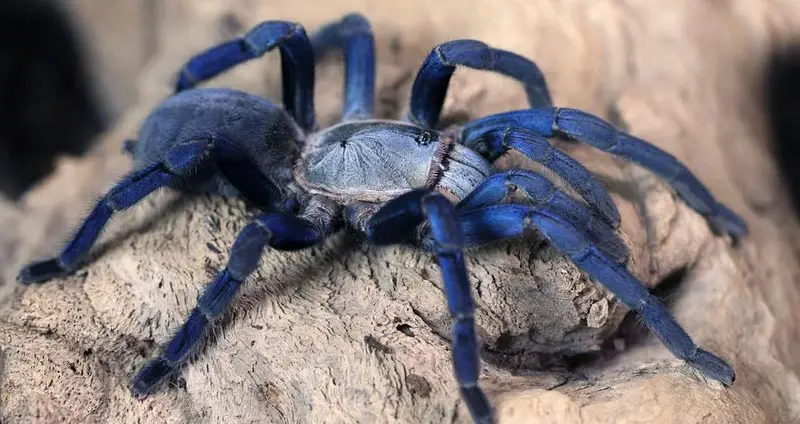
Haplopelma lividum – If you were to ask a tarantula enthusiast for the name of a blue tarantula, it’s likely that they’d name the Cobalt Blue tarantula, or Haplopelma lividum.
This tarantula is as blue as it gets. It has rich, deep blue legs, a light blue carapace, and a fuzzy royal blue abdomen.
To the naked eye, this tarantula looks incredible. However, under direct light, it’s clear why this tarantula is so well-received. If you want a blue tarantula, look no further!
Conclusion
As you can see, there are some absolutely stunning blue tarantulas that exist. Some feature their blue colors in unique ways, while others are just a rich blue from pedipalp to spinneret!
While of these tarantulas was your favorite? Did we leave out a blue tarantula that should have been highlighted here? Let us know in the comments below!

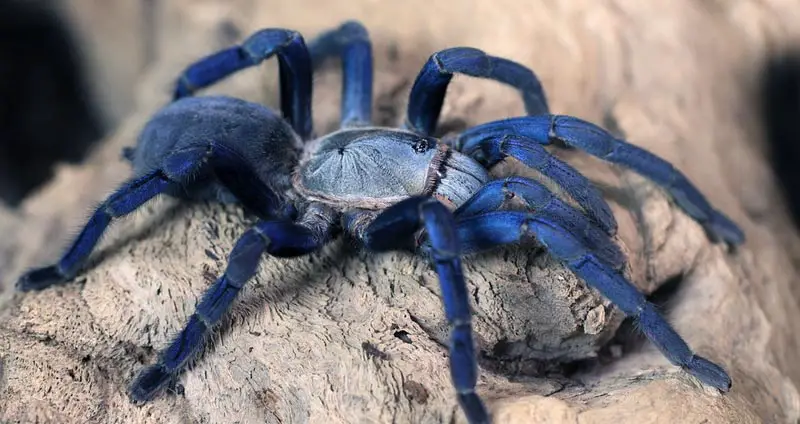
I found a Blue Tarantula in my house. Could I send you a pix?